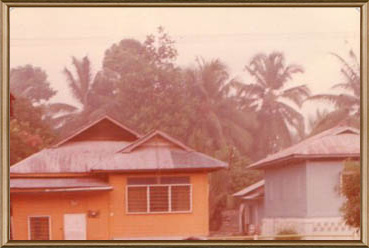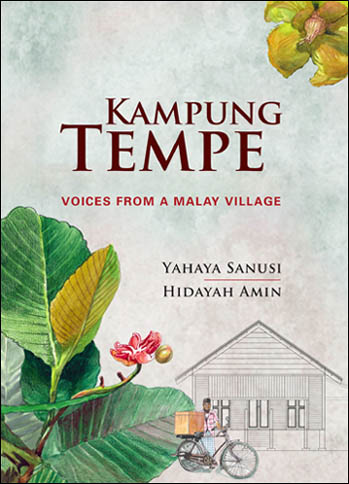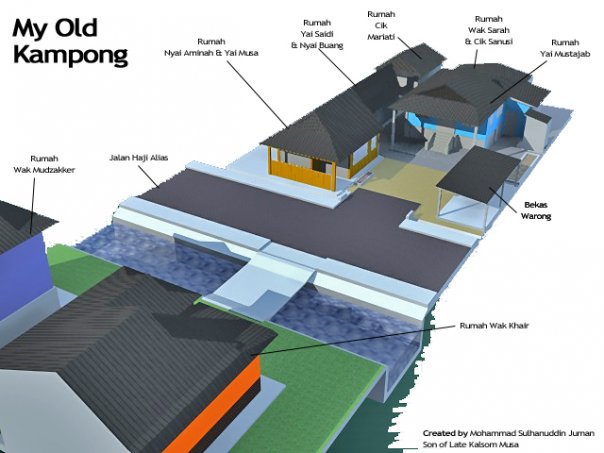History of Kampong Tempeh
Learn more about the village that became the birthplace of Al-Huda Mosque.

In the olden days not too long ago there was a kampong (village) by the name of Kampong Tempeh in Singapore. It was located between Sixth Avenue and Coronation Road West in the Bukit Timah area. During its heydays between 1920’S and late 1980’S, Kampong Tempeh was quite a big village spanning a neighbourhood which comprises of Jalan Haji Alias, Jalan Lim Tai See, Coronation Road West, Jalan Siantan, Jalan Ampang and Jalan Tuah.

If you look at the map of Singapore today, you will not be able to locate Jalan Tuah anymore. Jalan Tuah was just a short street in terms of size and when all the people have moved out of the kampong due to relocation, the authorities have unceremoniously removed it from the Singapore map.
Kampong Tempeh received its name and was made famous in Singapore during those days for the tempeh that was produced in the village. Tempeh is a type of fermented food made out from soy bean which originates from Indonesia and it is a favorite item among the Javanese people. Most of the pioneering villagers living in Kampong Tempeh came from Indonesia and there were many families involved in the tempeh making business. The tempeh produced were home made, its recipe being passed down from the older generation and their productions combined were enough to make it as a famous tempeh making district. As time goes on, gradually food companies started producing tempeh from the factories and at the same time by the late 70’S only a handful of the families were left in the tempeh business.
There were actually many clusters of houses in the kampong and each cluster may comprise of several houses belonging to the same close-knit family members. This is of course the traditional way of how the old Malay kampong is structured and Kampong Tempeh is of no exception. Most relatives tend to have their houses next to each other. This was possible because originally one family would normally build a house in quite a large plot of land and when the family grew, they simply build an annex as another unit of dwelling or if space permit, another house is built next to it. It was not known how many houses or families actually were living in the kampong but it could be around 100 or 200 houses.

An image of raw tempeh, which are soybeans binded into cakes through a controlled fermentation process.
Within this kampong, there were also several houses belonging to Chinese families and there was also a Chinese temple, a few Chinese grocery shops and a Chinese wayang stage. The Malays and Chinese lived together harmoniously in Kampong Tempeh and many of the Malay kampong folks and children would even attend to watch the Chinese wayang shows. The temple is still there but the wayang stage is already gone.
Around the mid 80’s the authorities sent circulars to the land owners of the kampong that their land needed to be redeveloped into proper houses according to the building standards of the day and wooden houses were not to be allowed and to be phased out in Singapore. So by the late 80’S almost all of the kampong folks have already sold their lands and moved out of their beloved Kampong Tempeh. Only a few managed to redeveloped their kampong houses into new houses according to the requirements of the authorities but today, there is only one family still residing on the same house that they have redeveloped.

Book about Kampong Tempeh
Kampung Tempe – Voices From A Malay Village
Authors: Dr. Yahaya Sanusi and Hidayah Amin
Published: 23 July 2016
Format: Hardcover
Published By: Helang Books
Come leaf through these pages, and listen to the voices from a Malay village, engulfed by modernity and the effluxion of time.
The book is available from most major bookstores in Singapore and some online bookstores.
This book conveys fragments of the village’s history and retells stories from the bygone days of the early settlement, such as the villagers’ fear of living in bunkers during the war, and their struggle sourcing for food that led them to produce tempe or fermented soya bean cakes, for which the village later came to be known.
In early 1905, a group of Javanese, led by Alias Bin Ali, started a settlement on a hillside in Singapore, not far from the present Sixth Avenue, off Bukit Timah Road. The swampy land then was infested with mosquitoes and quite uninhabitable. Despite the challenging circumstances, the Javanese settlers, most of whom were farmers and gardeners, successfully cultivated vegetables such as tapioca, chilli and even tobacco.
A hundred years later, the village disappeared. The only visual testament to the prior existence of the village – sited on one of the most expensive residential areas in Singapore – is a small mosque named Masjid Al-Huda, located along Jalan Haji Alias.
Read Some Excerpts From The Book
Click on “+” icon to expand.
The Javanese Came
1905
The Pandan River has its source near Kampung Tempe, hence its name Ulu Pandan. Ulu means the farthest point, and in this case, the farthest point from the estuary, far away from the maddening crowd of the city centre. The Ulu Pandan area between fifth and sixth milestones off Bukit Timah Road was scarcely inhabited. The ground with its granite base and mud soil was not very fertile and did not provide good natural drainage, hence the area was constantly flooded. Besides the few kampong huts, the only striking landmark was the forty-hectare Chinese cemetry (the size of 100 soccer fields) located near the sixth milestone of the precinct presently known as Sixth Avenue.
Land Grant
Haji Alias bin Ali was a gardener who led an austere and frugal life. Like many other villagers in Kendal in Java, he had travelled from Indonesia to Singapore before the turn of the century in search of happiness. Having worked very hard, he managed to save sufficient money at a relatively young age and soon bought a plot of land near Coronation Road, on which he built his house. Now he had his own kebun (garden). The rumah panggung on stilts was his pride. It was the first house in this new village. Though it was neither big nor pompous unlike some of the new kampong houses built elsewhere on this island, most importantly, the house was a symbol of the fruit of his labour and it belonged to him.
Tempe Industry
About a year after Wak Sidol started his tempe production, others in the village saw a chance for them to be involved in the business as well, and jumped into the bandwagon. After one family in the adjacent street of Jalan LimTai See joined in the trade, others followed suit. Although the tempe-making process was not easy, Sidol was kind and gracious and provided useful tips to all of them. At its peak, there were as many as five families carrying on the business, in what could possibly comprise the largest scale ever of the tempe-making industry in Singapore.

MASJID AL-HUDA
34 Jln Haji Alias, Singapore 268534
Bus: 77, 156 & 970 (along Sixth Avenue)
Nearest MRT Station: Sixth Avenue (DT7) Downtown Line
Mosque Operational Hours
5.30am - 7.00am
12.30pm - 9.00pm
Office Operational Hours
Monday to Thursday : 9.00am - 6.00pm
Friday : 9.00 am - 5.00pm
Closed on Weekends & Public Holidays
Contact Us
Email : admin@alhuda.sg
Official Contact : +65 6468 4844
MRO Contact : +65 6219 4347
Whatsapp : +65 6468 4844

